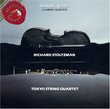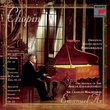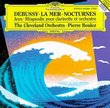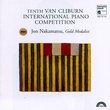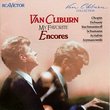| All Artists: Wolfgang Amadeus Mozart, Alicia De Larrocha Title: Mozart: Klaviersonaten Piano Sonatas Volume 3 K. 309, 310, 311, 330 Members Wishing: 0 Total Copies: 1 Label: RCA Release Date: 2/11/1992 Genre: Classical Styles: Forms & Genres, Sonatas, Historical Periods, Classical (c.1770-1830) Number of Discs: 1 SwapaCD Credits: 1 UPC: 090266045426 |
Search - Wolfgang Amadeus Mozart, Alicia De Larrocha :: Mozart: Klaviersonaten Piano Sonatas Volume 3 K. 309, 310, 311, 330
 | Wolfgang Amadeus Mozart, Alicia De Larrocha Mozart: Klaviersonaten Piano Sonatas Volume 3 K. 309, 310, 311, 330 Genre: Classical
I like some volumes of Alicia de Larrocha's Mozart sonatas very much and others a lot less. It probably has to do with my own mood rather than the pianist's, especially since the performances collected on this disc come fr... more » ![header=[] body=[This CD is available to be requested as disc only.]](/images/attributes/disc.png?v=15401716) ![header=[] body=[This CD is available to be requested with the disc and back insert.]](/images/attributes/disc_back.png?v=15401716) ![header=[] body=[This CD is available to be requested with the disc and front insert.]](/images/attributes/disc_front.png?v=15401716) ![header=[] body=[This CD is available to be requested with the disc, front and back inserts.]](/images/attributes/disc_front_back.png?v=15401716) |
Larger Image |

 Track Listings (12) - Disc #1
Track Listings (12) - Disc #1



